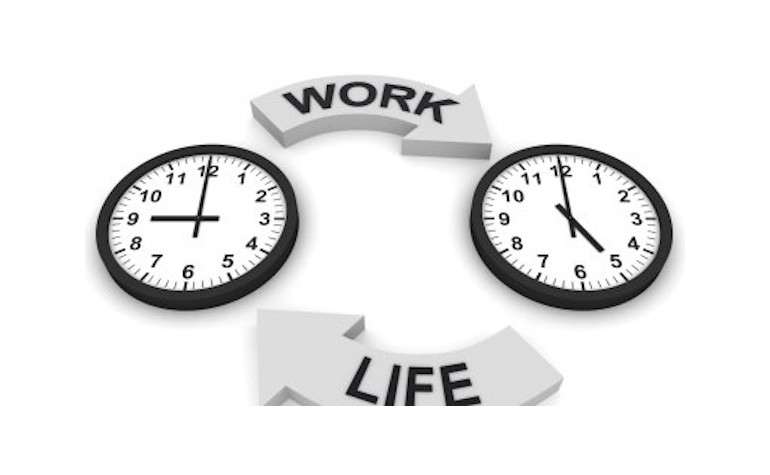Getting Off the Treadmill
“Working 9 to 5, what a way to make a living
Barely getting by, it’s all taking and no giving
They just use your mind, and they never give you credit
It’s enough to drive you crazy if you let it.”
Dolly Parton, “9 to 5,” 1980
It will come as no surprise to learn that long work hours are not good for your health. In fact, they can be deadly. They are killing hundreds of thousands of people a year, according to the World Health Organization. The global study found that 745,000 people died from stroke and heart disease associated with long working hours in 2016 — an increase of nearly 30 percent from 2000. So, it is welcome news when reports come out from Iceland of the benefits and popularity of a shorter work week.
Iceland, population of 357,000 is probably best known for its Viking roots and dramatic landscapes. Not many would expect it to be a place of social experimentation. Yet two weeks ago, it got widespread coverage in the international media for precisely that. A detailed analysis of Iceland’s experiment with shorter work weeks was released and the project has been declared “an overwhelming success.” The study of 2,500 workers – more than 1 percent of the workforce – was conducted between 2015 and 2019 to find out if a shorter workday led to more productivity and a happier workforce. The trials were made across an array of different types of workplaces – all in the public sector. The trial showed improved quality of working life and work-life balance. There was no reduction in pay with the shorter work week of 35 to 36 hours, and employers saw either an increase or no change in productivity. This confirmed earlier experiments in the same field. Since then, Iceland’s unions have negotiated a shorter working week for the majority of the workforce.
So good news for workers and socialists? Mainly yes but with some qualifications. In the sense that this is a continuation of previous gains around shorter working hours, even eliminating certain types of labour, it should be applauded. It has been part of the struggles of the international labour movement for over 150 years, starting with the fight to eliminate child labour, moving onto the 5-day week, and then the 40-hour work week. The latter became the norm in most countries around the beginning of the 20thcentury although it didn’t become law in Canada until the 1960s.
A moderate measure
Reducing the work week, as per the Iceland experiment, while being a step forward, is a very moderate measure. In the last 50 years, work has only taken up a larger portion of our lives – in 2013, 40 percent of working Americans worked more than 40 hours per week. In Canada, “average hours worked per week have changed little since the mid-1960s although a new trend has developed since the economic downturn of the early 1980s.” It’s called “hours polarization,” meaning that “the proportions of male workers putting in both longer (41 or more) and shorter weekly hours (less than 35) have risen. Among female workers, a growing percentage work long hours… the shift out of standard to long hours has been the most skewed for women aged 35 to 54.”
That’s a far cry from what experts in the 1960s predicted for the future, when a US senate committee projected the American work week would be down to 14 hours by 2000. Before that, the British economist John Maynard Keynes in 1930 had speculated that the tremendous growth of productivity happening at that time might enable us to eventually work only 15 hours a week.
Why did this never materialize? The TV cartoon show, the Jetsons (a futuristic version of the Flintstones) premiered in 1962 and was set in 2062. Many of the predictions its creators made about the year 2062 have already come true. A housekeeping robot? Tanning beds? Touchscreens? Video chat? – are all here. But in other respects, the Jetsons were still a long way off. No sign of those flying cars getting off the ground. No sign of moving city sidewalks either. But it’s probably in the area of work/leisure that they were furthest off the mark.In one Jetsons’ episode, involving the husband-and-wife team of George and Jane, there was this dialogue: “Yesterday, I worked two full hours!” George complains. Jane is appalled. “Well, what does Spacely think he’s running? A sweatshop?!”
Capitalist time thieves
In the 1980s, work week reductions came to a grinding halt. In many countries in the west, the work week stopped shrinking altogether. In the US, it actually grew. Seventy years after the US passed the forty-hour work week into law, three-quarters of the labour force was putting in more than forty hours a week.
This was part of the broad attack on working people by the capitalist class as the bosses moved to boost profits at the workers’ expense. It was one part of neoliberalism’s onslaught. At the same time, real wages stopped rising as the capitalists stole time and money from the workers. This is behind the huge rise in inequality, with the super-rich amassing undreamed-of wealth.
During World War II women streamed into the workforce, but this was largely reversed at the end of the war. However, starting in the 1960s women moved back into work. This was a result of changes in jobs, stagnant male wages and more women wanting the independence of their own income.
By January 2010, for the first time since World War II, the majority of the US labour force was women. In Canada women are nearly half of the workforce and the majority of union members. Where women contributed between 2 and 6 percent of the family income in 1970, by 2010 this figure had topped forty percent.
However, to make up for stagnant wages total family hours at work have increased. In the 1950s two adult households worked a combined total of five to six days a week, now it’s closer to seven or eight.
The futurist didn’t see the robbing of time or the dramatic increase of women into work. The Jane Jetson of 2062 was still an obedient homemaker. In 1967, the Wall Street Journal predicted that the availability of robots would enable the twenty-first-century man to spend hours relaxing at home on the sofa with his wife.
Working with a smart phone
Even citizens of the Netherlands – the nation with the shortest work week in the world, at 28 hours – have felt the steadily increasing weight of work, overtime, care tasks and education. In 1985 these activities were taking up 43.6 hours a week; by 2005, 48.6 hours. Three-quarters of the Dutch workforce is feeling overburdened by time pressures, a quarter habitually works overtime, and one in eight is suffering the symptoms of burnout.
A 2013 study conducted at the Harvard Business School showed that, thanks to modern technology, managers and professionals in Europe, Asia, and North America now spend 80 to 90 hours per week either working, or “monitoring” work and remaining “accessible.” And according to Korean research, the smart phone has the average employee working eleven more hours per week.
We are long past due for the fulfillment of Keynes’ prophecy. By the year 2000, countries like France, the Netherlands, and the United States were already five times as wealthy as in 1930. Yet nowadays our biggest challenges are not leisure and boredom, but stress and uncertainty.
The pandemic has been instrumental in enabling many workers to work from home and, you would imagine, making possible a shorter work. Yet evidence shows the opposite – as of April 2021, 5.1 million Canadians were working temporarily from home due to the pandemic. While there was some fluctuation in 2020, total working hours in Canada have been on an “upward trend since the beginning of 2021,” according to Statistics Canada.
Is capitalism OK with a four-day week?
Like the demand for a universal basic income, a shorter working week has its fans on the right.
Journalist Sabrina Maddeaux from the National Post wrote, on the publication of the Icelandic study, “Calling all politicians who need a quick boost in the polls: have you considered giving Canadians a four-day workweek? Erin O’Toole, I’m looking at you. I suggest a shortened workweek as a Hail Mary addition to the Conservative Party of Canada’s platform.
“Not only is a four-day workweek compatible with capitalism, it achieves classically conservative goals, such as increased personal autonomy and decreased government spending in areas such as health care, childcare and public transit. It promotes family values. It’s also a way to reduce our country’s carbon footprint without new taxes or infringements on individual choice.”
So, conservatives see the 4-day work week as a way to cut spending on health care and public transit. If the concern is about Canada’s carbon footprint, Ms Maddeaux has got it backwards. If workers and their families are going to be out and about on their newly acquired day off, we need to have a government that spends more on public transit to enable the workers to travel on expanded transit rather than using fuel driven vehicles that generate carbon emissions.
The report from Iceland is to be welcomed. Even a work week reduced by 1 or 2 hours would be better than nothing. Without going back to the Jetsons or the other old futurists, we can come up with more realistic demands – starting with a 4-day week of 30 hours. We can add to that a guaranteed 6 weeks paid holiday (already the norm in many European countries). If Jeff Bezos replies that he can’t afford these measures, Amazon workers could reply that if he is truly thankful to them for financing his space trip, he should pay them back by granting a shorter work week with no loss of pay.
Capitalism stole the hours of leisure that technology had offered fifty or more years ago. Marx said, “If the labourer consumes his disposable time for himself, he robs the capitalist.” Let’s have more robbery!




